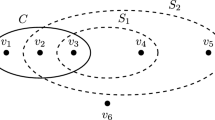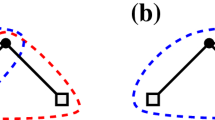A typical problem in network design is to find a minimum-cost sub-network H of a given network G such that H satisfies some prespecified connectivity requirements. Our focus is on approximation algorithms for designing networks that satisfy vertex connectivity requirements. Our main tool is a linear programming relaxation of the following setpair formulation due to Frank and Jordan: a setpair consists of two subsets of vertices (of the given network G); each setpair has an integer requirement, and the goal is to find a minimum-cost subset of the edges of G sucht hat each setpair is covered by at least as many edges as its requirement. We introduce the notion of skew bisupermodular functions and use it to prove that the basic solutions of the linear program are characterized by “non-crossing families” of setpairs. This allows us to apply Jain’s iterative rounding method to find approximately optimal integer solutions. We give two applications. (1) In the k-vertex connectivity problem we are given a (directed or undirected) graph G=(V,E) with non-negative edge costs, and the task is to find a minimum-cost spanning subgraph H such that H is k-vertex connected. Let n=|V|, and let ε<1 be a positive number such that k≤(1−ε)n. We give an \( O{\left( {{\sqrt {n/ \in } }} \right)} \)-approximation algorithm for both problems (directed or undirected), improving on the previous best approximation guarantees for k in the range \( \Omega {\left( {{\sqrt n }} \right)} < k < n - \Omega {\left( 1 \right)} \). (2)We give a 2-approximation algorithm for the element connectivity problem, matching the previous best approximation guarantee due to Fleischer, Jain and Williamson.
Similar content being viewed by others
Author information
Authors and Affiliations
Corresponding author
Additional information
* Supported in part by NSERC researchgran t OGP0138432.
† Supported in part by NSF Career Award CCR-9875024.
Rights and permissions
About this article
Cite this article
Cheriyan*, J., Vempala†, S. & Vetta, A. Network Design Via Iterative Rounding Of Setpair Relaxations. Combinatorica 26, 255–275 (2006). https://doi.org/10.1007/s00493-006-0016-z
Received:
Revised:
Issue Date:
DOI: https://doi.org/10.1007/s00493-006-0016-z




